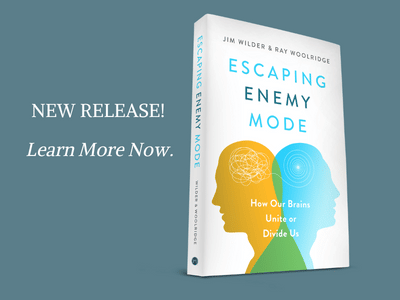The human brain has the remarkable ability to craft coherent stories and create meaning from personal experiences.
At Life Model Works, we call this skill “telling four-plus stories.” These are stories that engage all “four levels” of our brains. When engaged this way, the right hemisphere of the brain synchronizes with the left hemisphere. The left hemisphere relies on emotional content from the right to pull together details from life and weave coherent stories that synchronize the brain and captivate our listeners.
We find meaning and make sense of our experiences when we package and deliver complex events into a simple story.
These autobiographical stories include our emotions and body. We are active participants, intricately involved in the series of events that make up our lives. When the meaning-making system works correctly we replay these events in our minds then engage our listeners on this most meaningful adventure. We use our words, voice tone, facial expressions and body to share our reality. With practice, a portrait comes together that is integrated, clear and compelling.
When attuned, a listener’s brain responds as though he or she is reliving the adventure with us, experiencing the actual event. In this way shared stories are assimilated into the fabric of our relationships.
One sign of a trained brain is how well we can create coherent narratives about our days, interactions and experiences with enough words, feelings and authenticity. Stories open the window to the workings of our internal world. Stories give meaning to what matters most, even helping our brain process difficult events. Interactive stories provide the opportunity to pass on relational brain skills.
Stress and unprocessed pain hinders our ability to tell a coherent story. This failure results in a negative perspective and a fragmented view of life.
When stressed, we become rigid and shift to blaming, shaming and justifying. Flexibility disappears. Mutual satisfaction deteriorates as we feel compelled to justify and defend ourselves. A lack of coherency shifts our focus to “the moment” opposed to the broad panorama that comes from a history anchored in a functioning, integrated brain.
Stories,when shared, start and sustain our joy. Can you remember stories people have told you? Are you are story-teller? Look at a few practical suggestions below to improve your stories in order to sustain your joy.
Suggestions to magnify the meaning-making system.
- Practice telling 2 to 5 minute stories from your day. Find stories that demonstrate moments you felt real, genuine joy. What did you appreciate from your day? This and other exercises can be found in the THRIVE Basic Skill Guide.
- Practice Shalom my Body exercises to quiet your body.
- Reflect and review what joy feels like for you. Tell people joyful experiences on a regular basis.
- Use the 3-step Immanuel process as a guide to remove blockages that hinder your stories. Talk with God about the things that bother you.
- Correct insecure attachment styles. Our histories and examples can dictate how naturally we tell stories. Correcting faulty attachment patterns moves us toward secure love and joy that is expressed through our stories. Read Joy Starts Here for more.
- Pursue additional training with THRIVE, Connexus, THRIVE Skill Guides and Joy Rekindled marriage retreats to strengthen this brain system.
- Start by sharing your all-time favorite stories with listeners then notice how stories improve with practice.
Learn more in Thrive Training
Want to live with sustained joy? Be sure to read the rest of this series (1, 2, 3, 4, 5, 6.)









